THE FAIRY TALE: “Snow White” by The Grimm Brothers
THE MEDIUM: Film
THE MOVIE: Snow White and the Huntsman from director Rupert Sanders
Well, I’m back to take a look at more fairytale adaptations. This time, I decided to delve into the recent adaptation of Snow White with Snow White and the Huntsman. This tale of a young woman being persecuted by her older stepmother is one of the most iconic of the Grimm’s fairy tales. I have enjoyed the adaptations made from it in the past couple years. However, as a diehard Grimm fan, I particularly like when someone tries to stay faithful to the original Grimm take in all its’ dark gruesomeness. Director Rupert Sanders version of Snow White certainly does this.
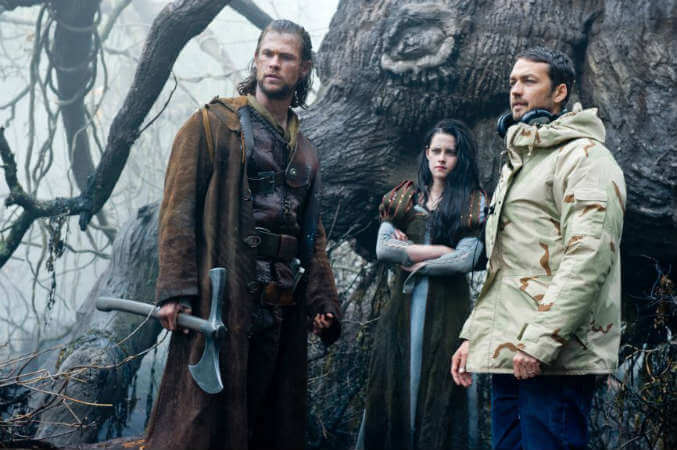
Overall, I really loved this movie and how it echoed back to the original Grimm’s version of the tale. Director Rupert Sanders did a great job capturing the darker side of this fairy tale and giving us a grittier version rather than the lighthearted take Disney did. In an interview, Sanders even stated that he much preferred the wicked realism to the more cartoony, magical qualities of the Disney film. He wanted to make a real world where the fairytale existed, doing ample research on life in medieval times. I think Sanders definitely succeeded in his goal. This version stays nicely with the details and tropes in the Grimm’s tale. Sanders himself said that he actually followed the Grimm’s version when making the film.
At the beginning of Snow White and the Huntsman, Sanders stays true to the original symbolism of the tale. He focuses in on the theme of the three colors, white, red, and black that embody the idea of the character of Snow White. The original line from the fairy tale is, “Child white as snow, red as blood, and as black as the wood in this frame.” We have a scene where the mother is standing in a snow-covered garden and pricks her finger on a rose, causing three drops of blood to pour from her finger onto the pristine snow. According to Bruno Bettelheim, the colors symbolize the cycle of life. White symbolizes innocence and purity, red symbolizes sexual maturation and passion, and black symbolizes death and the end of life.
This alludes to the cycle that all women and humans, in general, must go through. No one, not even the determined queen can escape that. We also see all three aspects of life played out in the tale. Snow white is, at first, young and innocent, then matures into a young woman, and near the end goes into a death-like sleep before she is awakened by the prince. Bettelheim claims that “what may seem like a period of deathlike passivity at the end of childhood is nothing but a time of quiet growth and preparation, from which the person will awake mature, ready for sexual union.” So, here we see the sleep of Snow White as something like the cocoon that a caterpillar goes into before becoming a butterfly. So even during the life cycle, we still see signs of our inevitable end.

In the vein of the symbolism of the different colors, there is also symbolism in the three attempts that the queen makes on Snow White’s life. While Sanders only includes the last murder attempt of the poisoned apple, I think it is interesting to note the meaning of all three.
In the original version of the Grimm’s Snow White, each of the queen’s attempts on Snow White’s life represents a color, and as such the corresponding part of life that that color represents. The first attempt on Snow White’s life is made with a corset made to squeeze the breath from Snow White’s body and thereby suffocate her. Breath is associated with the color white. The queen’s second attempt on Snow White’s life is made with a poisoned comb for Snow White’s hair, which is black, signifying death. The third and final murder attempt is made with the red apple, signifying passion and sexual maturity. It is telling that this is the one that finally gets Snow White, as it is her sexual maturity that has caused the queen to come after her in the first place. All of this further serves to drive home the idea of the cycle and circle of life. Each generation must eventually make room for the next.
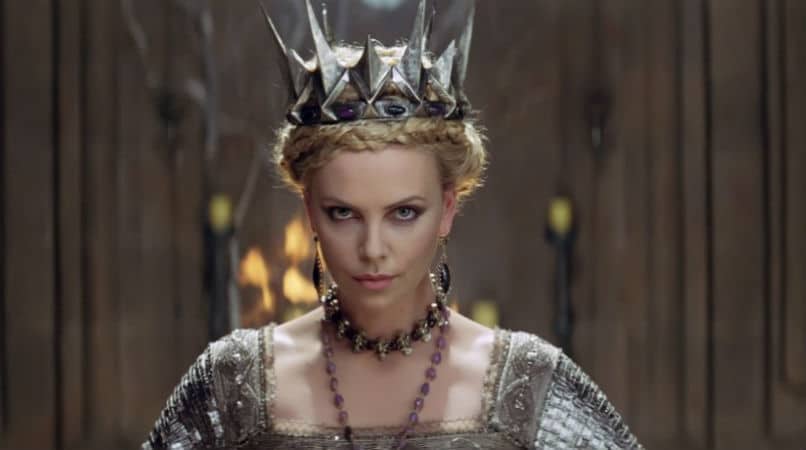
One of my favorite aspects of this film was Charlize Theron’s performance as the Queen. In order to better understand exactly what Ms. Theron had to embody, I thought we might look at some interesting facts about this famous character.
In the original version of the story, before the Brothers Grimm edited their stories, the stepmother was actually Snow White’s real mother. The brothers changed it because it was thought to be too frightening for children. But it does pose an interesting question. Why was she originally in the story Snow White’s birth mother? Well, as you might have guessed, I have some thoughts about that.
This story in its essence is about the fear of growing older and irrelevant due to the jealousy and desirability of youth in our society. Bruno Bettelheim suggests that this story could present real problems that occur between mothers and their daughters as the mothers watch the young female sexually mature and grow into a woman that is relevant in our society for her ability to produce children. “Snow White and the queen’s relations are symbolic of some severe difficulties which may occur between mother and daughter.” Losing that ability as we get older eliminates one of our chief forms importance in society and threatens our continued relevance. This would have been particularly true in the Grimm’s era and earlier, as that was a woman’s main function at the time. Women didn’t have jobs as they do in today’s society.
While Snow White represents the beautiful mature woman, the queen represents the crone, an older woman close to death. Theron plays this role of the grasping crone to a tee, obsessing over her looks and constantly touching and examining her face. Sanders cleverly dresses her in black for much of the film, harkening back to the symbolism of the three colors that dominate in the tale. Theron’s performance is by far my favorite performance of the queen in Snow White so far. She does a beautiful job of portraying this woman that didn’t start out evil but has been pushed and prodded in that direction until she revels in it. There is a part of her that truly does think that if she kills Snow White she will be doing her a favor, as she won’t have to go through the pain of growing old. Theron plays up the questionable sanity of the queen, making for great entertainment.
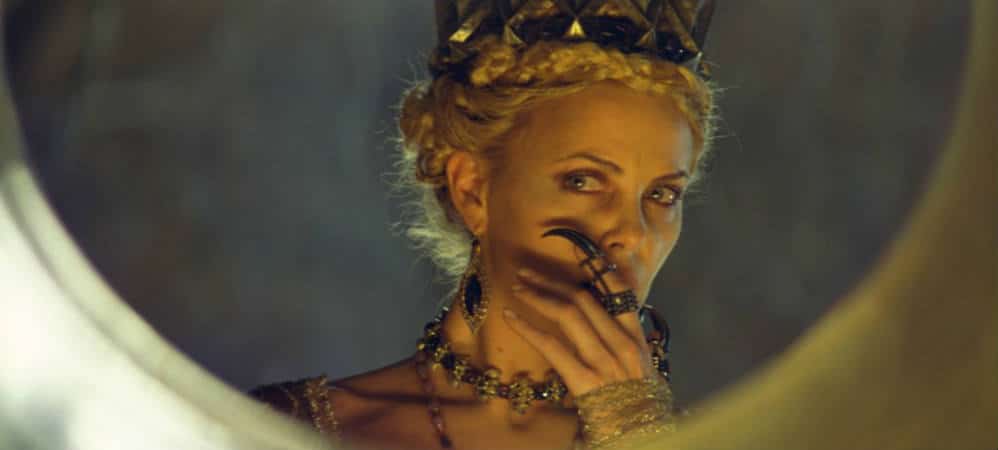
One thing that Sanders plays around with is the character of Snow White. While he stays true to her original basic features, he changes her valued purpose in this movie. In the original tale, Snow White is valued by the dwarfs for her domestic prowess. When she meets the dwarfs, they make the deal with her that, “If you keep house for us, and cook, make beds, wash, sew, and knit, and keep everything clean and orderly, then you can stay with us.” For the time period in which this was written, this would have been a woman’s chief form of value. Children would have been taught to value and try to follow this example of what it means to be a woman. So, it makes sense that this is highlighted in the tale. Sanders has rightfully changed Snow White’s form of value for our own time period. Instead of domestic prowess, Sanders makes her valued for her ability to lead her people into battle against the queen. He even goes so far as to have her literally at the front line when they attack the queen. Sanders turns Snow White’s character into a physically and mentally strong female, emulating other female characters in television and movies right now.
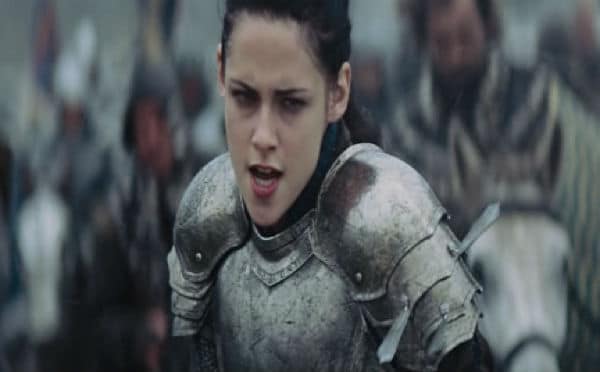
The role of the hunter is one of the biggest changes that Sanders made to the original tale. Rather than just being a minor side character, he is brought to the forefront and transformed into a leading man. It is his kiss and not the prince’s that awakens Snow White. I personally loved this change, as it highlighted the merits of the strong working man. It transformed a tale about characters far removed from our reality, a prince and a princess, to ones that are more accessible. He is an everyday ordinary man; someone you could meet in a bar or walking on the street. He also turns the character into a much more rugged type, for which I definitely give two thumbs up. I like that he replaced the feminine prince with a rugged outdoors type.
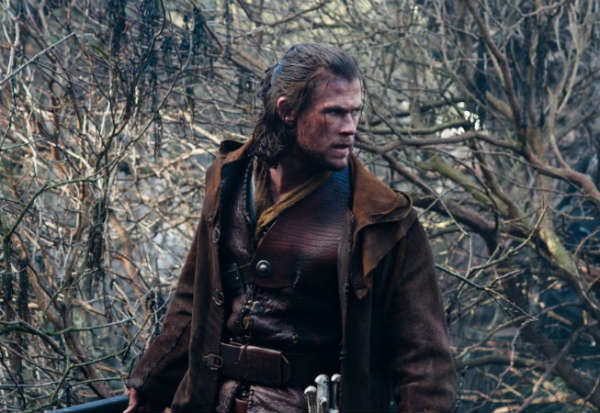
On a quick side note, in the original Grimm’s tale that prince did not actually awaken Snow White from her slumber. I actually only just discovered this when I was brushing up on my research for this article. Apparently the Grimm’s original version of the tale had the prince and his men tripping while they were carrying off Snow White’s casket, thereby dislodging the apple from her throat and reviving her. Who knew? Anyways, I just thought that little tidbit was too interesting to simply pass by.
Overall, I think that Sanders has done an admirable job adapting this iconic tale for the big screen. He sticks with many of the important aspects of the original Grimm tale while changing a few facts to make it more accessible to people in this century. The cast did a bang up job portraying their characters and the movie made for a very entertaining jaunt. I was very pleased and impressed.
What did you think of Snow White and the Huntsman? Were you as enchanted as I? Sound off below…
Sources:
Aquino, Tara. (2012, June). “Snow White and the Huntsman” Director Rupert Sanders Talks Dark Fairy Tales & Kristen Stewart’s Toughness. www.complex.com.
Bruno Bettelheim. (1975). The Uses of Enchantment. New York, Random House Inc.
Tatar, Maria. (2003). The Hard Facts of the Grimms’ Fairy Tales (Expanded Second Edition). Princeton University Press.
Zipes, Jack. (1998). When Dreams Came True: Classical Fairy Tales and their Tradition. Routledge.
ARE YOU A ROMANCE FAN? FOLLOW THE SILVER PETTICOAT REVIEW:
 Our romance-themed entertainment site is on a mission to help you find the best period dramas, romance movies, TV shows, and books. Other topics include Jane Austen, Classic Hollywood, TV Couples, Fairy Tales, Romantic Living, Romanticism, and more. We’re damsels not in distress fighting for the all-new optimistic Romantic Revolution. Join us and subscribe. For more information, see our About, Old-Fashioned Romance 101, Modern Romanticism 101, and Romantic Living 101.
Our romance-themed entertainment site is on a mission to help you find the best period dramas, romance movies, TV shows, and books. Other topics include Jane Austen, Classic Hollywood, TV Couples, Fairy Tales, Romantic Living, Romanticism, and more. We’re damsels not in distress fighting for the all-new optimistic Romantic Revolution. Join us and subscribe. For more information, see our About, Old-Fashioned Romance 101, Modern Romanticism 101, and Romantic Living 101.

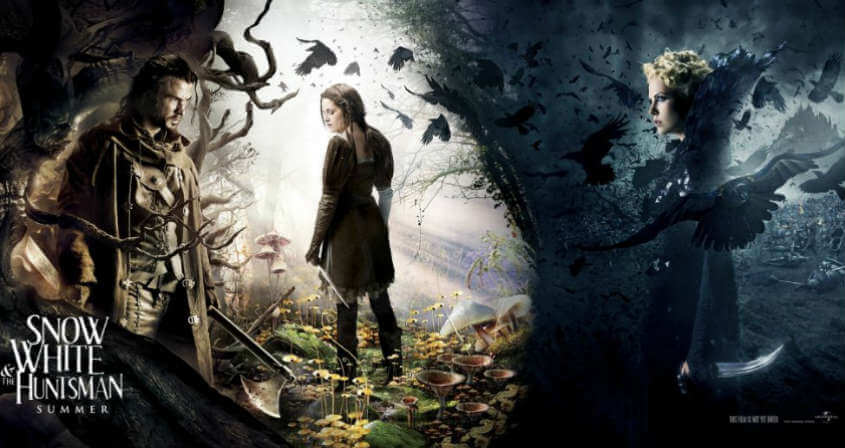
Really enjoyed this version. It’s darker but in its original form, this is how Snow White was told so that doesn’t matter. I didn’t love Kristen in the lead role (though she didn’t “ruin” it) but thought Charlize and Chris were sensational in their respective roles plus everything is visually gorgeous.
Great article.
Thank you! I enjoyed writing it. I have to agree with you on Kristen Stewart. She didn’t wow me either, but I think Charlize Theron’s performance more than made up for that.
Interesting review with good imagery. Very solid.
I would like to suggest finding another source besides Bettleheim. He was thoroughly discredited several years ago and does not deserve to be credited as a source. It does you a disservice to be identified with him, even if only tangentially.
I just rewatched this since in sneaked into my Netflix feed and was pretty uncomfortable with it, and it had nothing to do with how dark it was. I’m a big fan of Grimm’s, a huge fan of Charlize and Chris Hemsworth, and I even have a soft spot for Kirsten. I especially loved Bob Hoskins’s cameo (was it his last screen role ever?). I did not like the gimmick of Snow White as the warrior queen.
It seems to me that male film creators are on the verge of really “getting it” when it comes to making room for female roles, but they can’t seem to keep their testosterone out of it! There’s this intense plot twist of Snow White in the Fairy Lands, meeting the white stag yadda yadda, and it’s revealed that she’s “life itself”. So then we’re supposed to go along with her putting on chain mail?? This is pure man-juice stuff and I was really disappointed. They have to punch their way out of every story line or they don’t feel like men.
Don’t assume I’m anti-movie violence or anything, far from it. I just didn’t think it made sense in this story at all. I like a good battle scene but I resent when it’s gratuitous and manipulative. The entire movie built up SW’s character as this gentle, empathetic healer, then ends with her bellowing at the troops to stir up their blood lust. Give me a break!
A “strong” female character does not have to be a “violent” female character, and it does nothing to make her more attractive. This was a device used to appease young male movie-goers.
Great thoughts. Thanks for sharing.